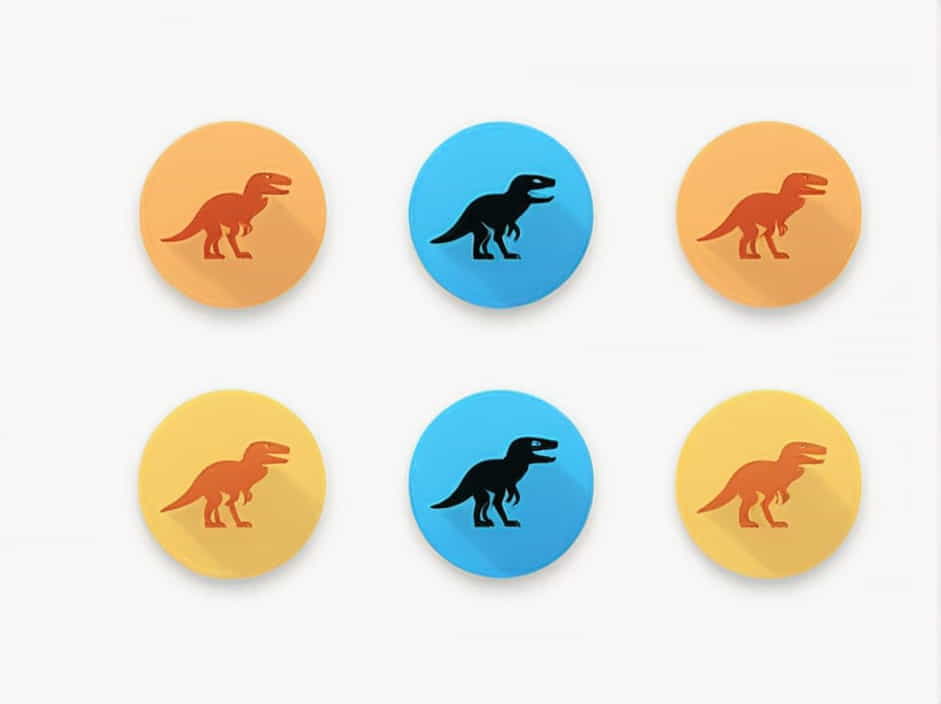The Mesozoic Era is often called the Age of Dinosaurs because it was the time when these prehistoric reptiles dominated the Earth. This era lasted from about 252 million to 66 million years ago and was a period of dramatic geological, climatic, and biological changes.
The Mesozoic Era is divided into three major periods:
- Triassic Period (252-201 million years ago)
- Jurassic Period (201-145 million years ago)
- Cretaceous Period (145-66 million years ago)
Each period had its own unique climate, ecosystems, and evolutionary milestones. Let’s take a closer look at these three periods and their significance.
1. Triassic Period (252-201 Million Years Ago)
The Triassic Period marks the beginning of the Mesozoic Era. It followed the Permian-Triassic extinction event, which wiped out about 96% of marine species and 70% of terrestrial species.
Key Characteristics of the Triassic Period
- Recovery from Mass Extinction
- Many new species evolved to replace those that went extinct.
- The first dinosaurs, pterosaurs (flying reptiles), and early mammals appeared.
- Climate and Geography
- Earth was hot and dry, with vast deserts.
- All continents were part of a single supercontinent called Pangaea.
- Rise of Reptiles and Early Dinosaurs
- Small carnivorous dinosaurs like Coelophysis emerged.
- Reptiles, including marine reptiles like ichthyosaurs and plesiosaurs, became dominant.
- Appearance of the First Mammals
- Early mammals were small, nocturnal creatures that resembled modern shrews.
- End of the Triassic Period
- The period ended with another mass extinction, likely caused by volcanic activity and climate change.
- This event allowed dinosaurs to become the dominant land animals in the next period.
2. Jurassic Period (201-145 Million Years Ago)
The Jurassic Period is famous for the rise of giant dinosaurs and the appearance of the first birds.
Key Characteristics of the Jurassic Period
- Warm, Humid Climate
- The climate became warmer and wetter, supporting lush forests and abundant plant life.
- Pangaea began breaking apart, forming new coastlines and shallow seas.
- Age of Giant Dinosaurs
- Large herbivorous dinosaurs, such as Brachiosaurus, Diplodocus, and Stegosaurus, thrived.
- Powerful carnivorous dinosaurs like Allosaurus became top predators.
- First Birds Evolve
- The first bird, Archaeopteryx, appeared, showing features of both dinosaurs and modern birds.
- Marine and Flying Reptiles
- Pterosaurs, such as Pterodactylus, ruled the skies.
- Oceans were home to massive plesiosaurs and ichthyosaurs.
- Plant Evolution
- Ferns, cycads, and conifers became dominant plant species.
- End of the Jurassic Period
- The period ended with gradual environmental changes, leading to new evolutionary adaptations in dinosaurs.
3. Cretaceous Period (145-66 Million Years Ago)
The Cretaceous Period was the last period of the Mesozoic Era. It ended with a mass extinction event that wiped out the dinosaurs.
Key Characteristics of the Cretaceous Period
- Continents Continue to Separate
- Pangaea had fully broken apart, forming the continents we recognize today.
- Evolution of Dinosaurs
- This period saw some of the most iconic dinosaurs, including:
- Tyrannosaurus rex – A massive predator with powerful jaws.
- Triceratops – A three-horned herbivore.
- Velociraptor – A small, fast, and intelligent predator.
- This period saw some of the most iconic dinosaurs, including:
- Rise of Flowering Plants
- The first flowering plants (angiosperms) appeared, leading to major changes in ecosystems.
- First Modern Mammals
- Mammals diversified but remained small compared to dinosaurs.
- End of the Cretaceous Period: The Dinosaur Extinction
- Around 66 million years ago, a massive asteroid impact near Chicxulub, Mexico, led to the Cretaceous-Paleogene (K-Pg) extinction event.
- This wiped out 75% of Earth’s species, including the non-avian dinosaurs.
Comparison of the Three Mesozoic Periods
| Period | Timeframe | Key Features |
|---|---|---|
| Triassic | 252-201 million years ago | First dinosaurs, early mammals, dry climate, supercontinent Pangaea |
| Jurassic | 201-145 million years ago | Giant dinosaurs, first birds, breakup of Pangaea, warm climate |
| Cretaceous | 145-66 million years ago | T. rex, Triceratops, flowering plants, asteroid impact extinction |
Why is the Mesozoic Era Important?
The Mesozoic Era is one of the most fascinating periods in Earth’s history.
1. Evolution of Dinosaurs
- The Mesozoic was dominated by dinosaurs, which evolved into a wide variety of shapes and sizes.
2. Rise of Mammals and Birds
- The first mammals and birds appeared during this time, eventually leading to modern species.
3. Geological Changes
- The breakup of Pangaea shaped the continents and oceans we see today.
4. The Cretaceous Extinction
- The asteroid impact led to the end of the dinosaurs, allowing mammals to rise in the Cenozoic Era.
The Mesozoic Era is divided into three major periods:
- Triassic Period – The beginning of dinosaurs and early mammals.
- Jurassic Period – The golden age of dinosaurs and the appearance of the first birds.
- Cretaceous Period – The peak of dinosaur evolution, followed by a mass extinction event.
Although the Mesozoic Era ended with the extinction of the dinosaurs, it paved the way for modern animals and ecosystems. The impact of this era is still visible in fossils, geological formations, and evolutionary history today.
